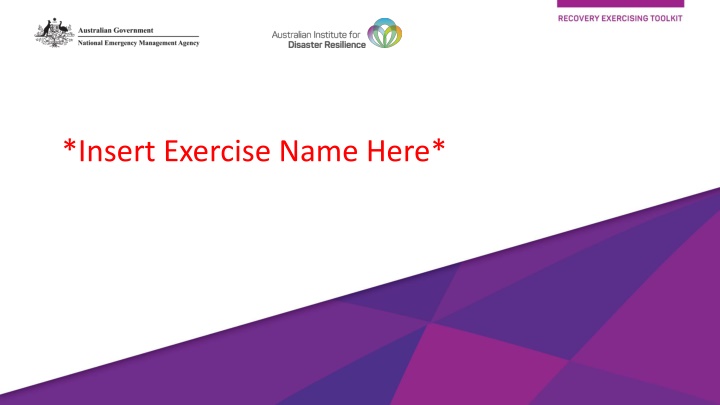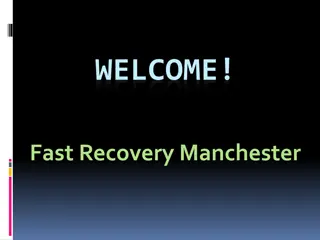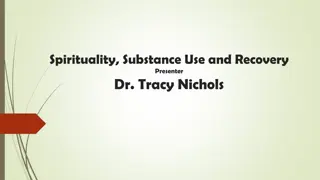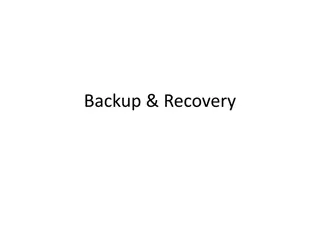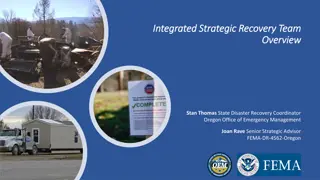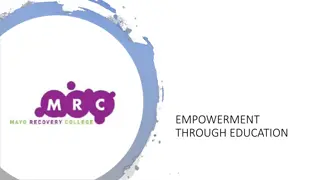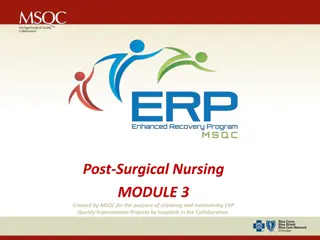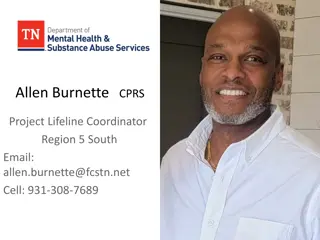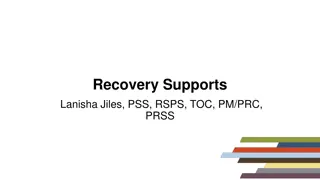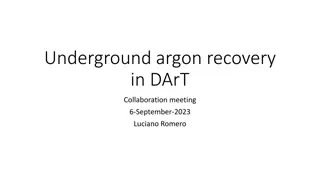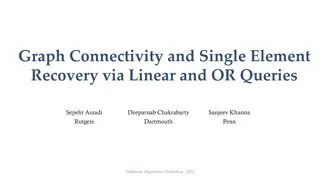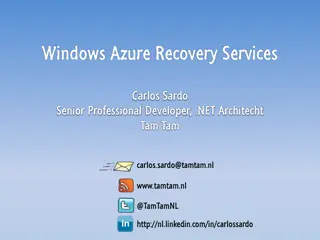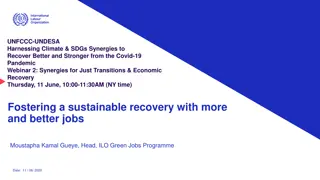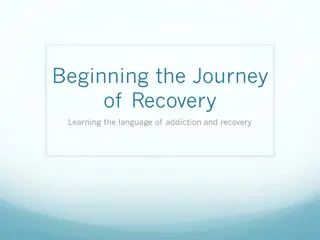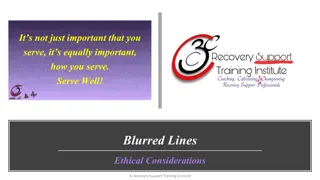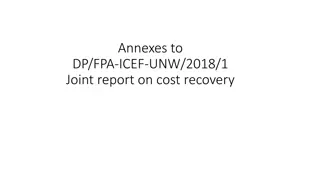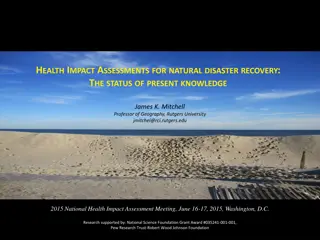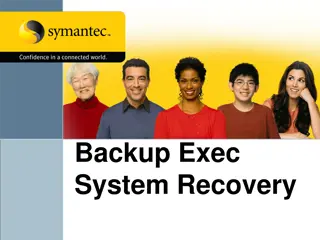Recovery Considerations and Collaboration
Recovery considerations across different terms and strengthen collaboration for evidence-informed approaches. Identify roles of stakeholders for informed planning and development
Download Presentation

Please find below an Image/Link to download the presentation.
The content on the website is provided AS IS for your information and personal use only. It may not be sold, licensed, or shared on other websites without obtaining consent from the author.If you encounter any issues during the download, it is possible that the publisher has removed the file from their server.
You are allowed to download the files provided on this website for personal or commercial use, subject to the condition that they are used lawfully. All files are the property of their respective owners.
The content on the website is provided AS IS for your information and personal use only. It may not be sold, licensed, or shared on other websites without obtaining consent from the author.
E N D
Presentation Transcript
Objectives Explore recovery considerations across the short, medium and longer term Strengthen collaboration and coordination in recovery Practice evidence informed approaches to recovery strategies and activities Explore the roles and responsibilities of government, non-government and local community stakeholders in recovery Identify areas for further development to inform recovery planning
Understanding Who the Community is - Before the Disaster National Principles for Disaster Recovery: Understanding the context Successful recovery is based on an understanding of community context, with each community having its own history, values and dynamics. Stakeholder Guide for Community Organisations (VCOSS 2022) Diagram 5 Community Profile (P15)
Understanding the history of disasters in your area Experiences of previous disasters will impact on how people will respond to and recover from the current disaster Consecutive and concurrent disasters have compounding impacts for individuals and communities and will affect recovery from the next disaster event. The more frequently disasters occur, the less time there is to recover between disasters: Recovery will be slower Risk of mental and physical health challenges will be higher
Recovery Environments In [Jurisdiction] recovery environments align with the subcommittees or task groups Xx Xx Xx xx
Recovery Exercise Scenario EXERCISE NOT A FORECAST The information on these slides is provided to illustrate the scenario and should not be used for decision-making. Photos and satellite views use historical information.
Fundamentals of Community Recovery Part A
Fundamentals of Community Recovery Part B
Recovery Considerations 3 weeks 3 months
Recovery Considerations 6 to 12 months
6 Takeaways on Recovery After Disaster Insights from Mallacoota on community-led recovery
Recovery Considerations 12 months and beyond
Plenary report: Recovery considerations over time What was a key recovery consideration for each time period and what were your priority actions? What issues have you identified that would benefit from further planning for inclusion in recovery plans and strategies?
Where to from here? Suggested next steps Plan for and confirm membership of your Recovery Committee and respective subcommittees annually, so that it can be stood up quickly after a disaster. Conduct annual pre-season briefings with community organisations and provide information about local emergency and recovery arrangements. Plan with community organisations how they can be involved and contribute as valued partners in recovery. Conduct a community recovery exercise, including all community organisations that may have a role in local recovery arrangements. Include a recovery exercise day as a standard component in emergency management exercise programs and whenever an emergency exercise is run.
Recovery Exercising Toolkit The Recovery Exercising Toolkit is a companion to the Managing Exercises Handbook and the Community Recovery Handbook The Toolkit provides guidance and resources for the design and development of a recovery exercise and includes a range of modules: Core modules Fundamentals of Community Recovery Recovery Considerations of Time Elective Modules Coordinating Recovery Support for People with Disability Working with Indigenous Communities in Recovery Foundations of Economic Recovery
